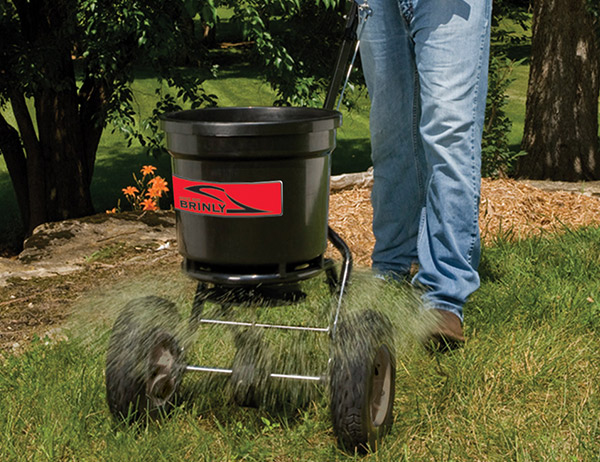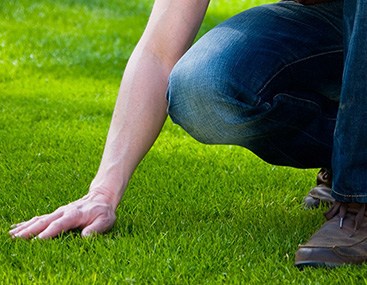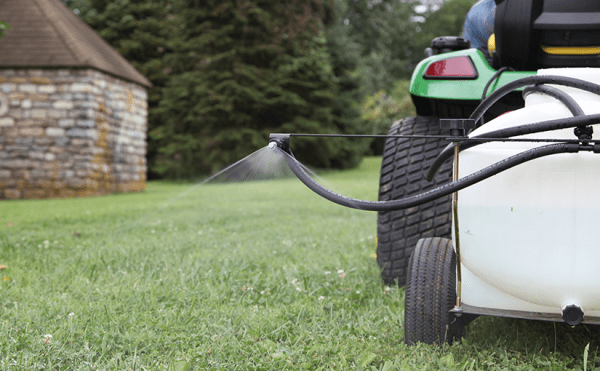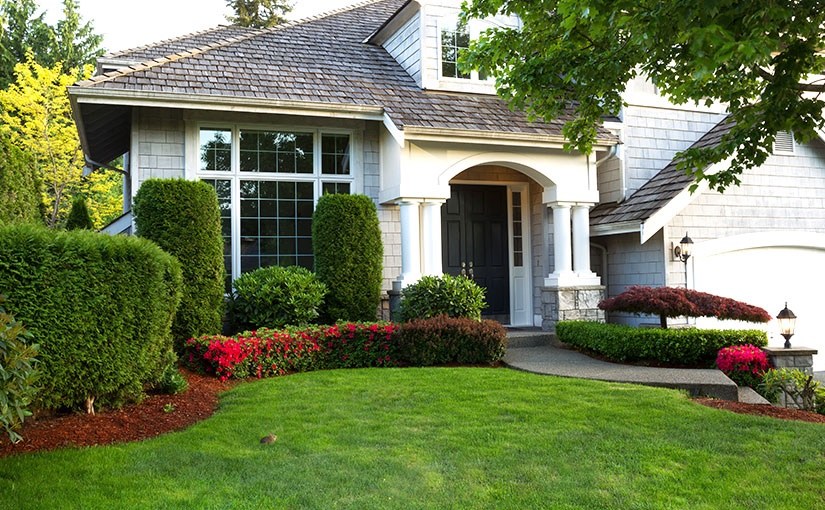How Often to Water your Lawn in Summer?
This is a question that comes up frequently, especially as the temperatures start to creep up across the country. Lawn care enthusiasts start to wonder how to adjust their watering schedule to ensure their lawn stays vibrant and green well into the rest of the year.
Unfortunately, there is no one-size-fits-all approach to watering your lawn in the summer. How much water your lawn needs really depends on how much shade the lawn receives, the soil type, as well as the type of grass growing there. Typically, lawns with more shade or clay soil do not require as much water as those in direct sunlight. However, you still need to consider the soil! If your lawn is sandy, you’ll probably need more water to keep it going. Test your soil to know for sure what you’re working with!
In general during hot summer months, you should be watering your lawn up to three times per week if there wasn’t any recent rainfall. As a general rule of thumb, watering up to one inch deep each time you water your lawn is ideal. You can use a rain gauge to measure out an inch of water every time you turn on the sprinklers (or grab a can and place it in the yard and measure up to 1inch if you don’t own a rain gauge). Areas in direct sunlight (and especially shrubs and flowers) may require additional water to thrive.
Responsible Lawn Watering
While we’ve now covered how often to water your lawn this summer, let’s chat how to cut down on water usage in general! July is National Irrigation Month, and it’s a great time to talk about reducing your outdoor water use. According to the EPA, you could be using up to 60% of your household water on your lawn and landscapes.
And yet, 50% of your outdoor water use is going to waste because of overwatering. Your lawn really doesn’t need the amount of water you’re giving it.
In the summer, you can use up to 1,000 gallons of water per day on your lawn and landscape.
At the extreme end, you and your family could be using up to 3,000 gallons of water per day, which is similar to letting your garden hose run for eight hours straight.
Yikes! If you pay for your water, this is hard on your wallet, and you’ve probably already seen an uptick since summer began. And if you depend on well water, you still need to conserve it to make it through a dry patch.
12 Tips for Responsibly Watering Your Lawn This Summer
There are simple ways you can save water (and money!) this summer. Some of it requires a change of thinking. For example, if your region is prone to drought, you may need to give up the idea of a perfect evergreen lawn as it won’t hold up in your region of the country in those extremes.
Likewise, if you have sandy soil that’s unable to hold water, you should add soil amendments to make it loamier. Loamy soil is like the forest floor—dark, rich, and able to store water underground.

Here are those 12 tips to help you save water and keep your lawn alive:
- Make the soil more water-friendly. As stated above, sandy soil won’t hold water. It absorbs water, but sandy soil can’t store it underground. Clay soil, on the other hand, does a great job of storing moisture underground. But it compacts quickly not allowing roots to grow deeply.
So, add soil amendments, such as compost, to loosen up the soil and help its absorption rate. Brinly’s tow-behind carts help you tote your soil amendments to your lawn for a makeover. Use our tow or push spreaders to broadcast the amendments and fertilizers throughout your yard.
- Water your lawn in the earliest morning hours. You don’t save water when you spray water on your lawn during the hottest part of the day because it’ll evaporate.
Depending on where you live, your turfgrass may be more prone to fungal diseases. So, experts recommend you water your lawn in the early morning hours. If you have a sprinkler system, you can set the timer to start between 4 a.m. and 9 a.m.
- You use less water with organic lawn care. If you go the natural route, your turfgrass will be more drought-tolerant and able to find stores of water deep underground. Organic fertilizers and other amendments also help the turf to grow root hairs that can find hidden moisture.
- Let your lawn grass grow longer. Set your mower blades at the highest setting to take off only the top third. When you mow higher, your turfgrass develops those deep root systems.
- Irrigate your lawn less often. Ideally, you can save water if you can wait until you see your shoeprint in the grass. Some folks don’t have that level of tolerance, but some lawns also do not require as much watering as they are getting. And remember, over-watering and drowning of the grass roots does happen! You could try a weekly watering consisting of 1”-2” of water.
Again, you can set your sprinkler system only to put out the right amount of water at the right time. Plus, if you get an inch or more of rain on a particular week, you don’t have to water your lawn.
- Let your lawn go dormant. If you have cool season grasses, let them go dormant during the hot, dry summer months. Your lawn will be brown, but it will perk up and get green again when it starts to rain.

Learn more: Do you want to change your lawn from synthetic to organic?
- Plant the right grass at the right place. Plant full-sun grass in sunny areas of your property, and shade-loving grass in shady areas. Conversely, if you plant shade-loving grass in full sun, you’ll be using more water to keep it alive.
Remember, the area you live in determines what type of grass seed you buy. In warm climates, buy warm season grasses. If you live in colder climates, you need cold season grasses.
- Reduce the amount of lawn space. If you live in a drought-prone area, you should think about reducing the amount of turfgrass you have. Yard grass does take a lot of water to survive, and it just may not be worth it in drier climates.
Instead, you can use artificial turf, prairie grasses, native plants, stones, hardscapes, and other xeriscaping ideas to reduce water, but still have a beautiful outdoor space.
- Invest in water-saving devices. You may not want to install an underground sprinkler system (even though it’s one of the best ways to reduce your outdoor water consumption), but you can invest in other smart watering devices.
- Update your lawn sprinkler. If you own an in-ground sprinkler system, you should get it recalibrated with the newest technology. Bluetooth controllers, timers, moisture sensors, and mini-weather stations all work to reduce the amount of water you use on your yard.
- Maintain your sprinkler system. Don’t forget to have a professional blow-out your sprinkler system in the spring and shut it down in late fall. You should also have an irrigation contractor maintain your irrigation system to make sure every part is working to its fullest potential.
Check out our YouTube Channel to watch Brinly-Hardy Lawn Care and Garden Attachments in action!
- Harvest your rainwater. If you live in an area that gets a regular amount of rain during the summer, you could collect rainwater in a rain barrel. You can also position your drain spouts to let water flow from your gutters directly on your lawn.

How Brinly-Hardy Lawn Care and Garden Attachments Help You Reduce Your Lawn’s Watering Needs
Brinly-Hardy Lawn Care and Garden Attachments help you keep a healthy lawn that doesn’t waste water. Our aerators, dethatchers, spreaders, and rollers do the work to produce vibrant turfgrass.
If you’re in the market for products manufactured to last a long time, you can find our products online. You can also contact us by filling out our contact form.
If you have questions about your Brinly-Hardy Lawn Care Attachment, you can call customer service at 877-728-8224. We’re available Monday through Thursday, 8 a.m. to 6 p.m. ET or on Fridays, 8 a.m. to 5 p.m. ET.
Source:


